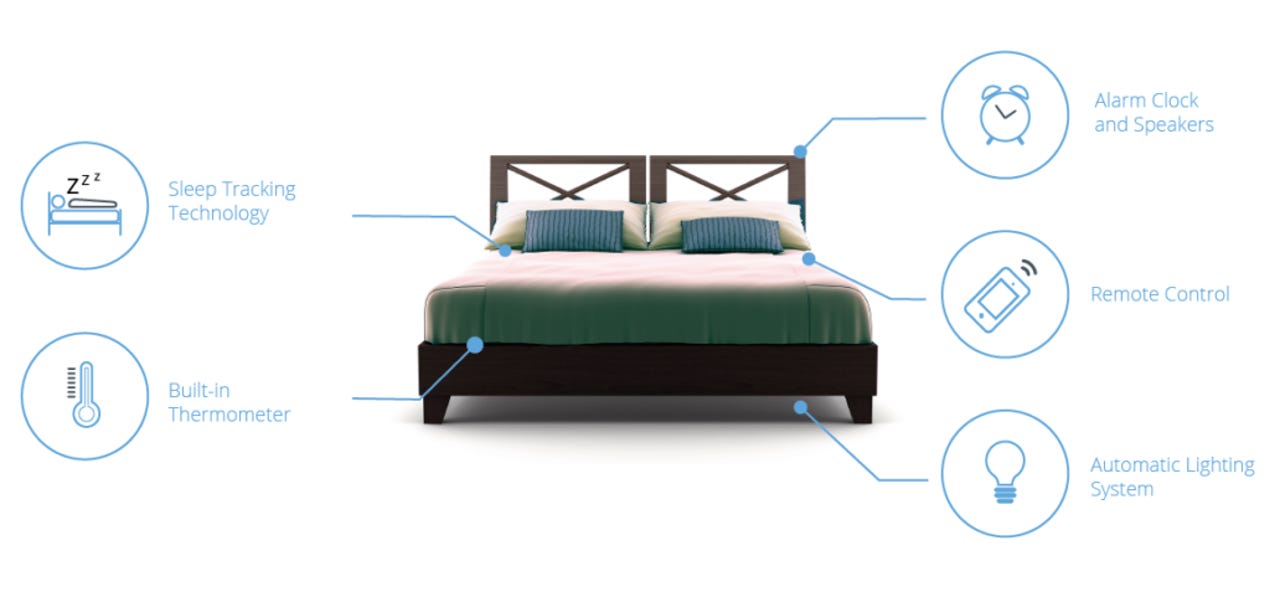Seebo, virtualizing Things on the Internet

IoT bears the promise of dramatic improvement for manufacturers, but deciphering it and seeing it through can be daunting. IoT startup Seebo promises to make IoT projects easier by offering an end-to-end solution that can support every step of IoT project development.

So many functions, so many sensors, so much complexity. (Image: Seebo)
Step 1: We could have lots of fun, designing
Imagine you're a mattress manufacturer, and you want to add value to your products by enabling them to monitor client sleep cycle. The data collected could be used to track health and sleep patterns, integrate with your alarm, or whatnot.
Trouble is, even though you may know what it is you want to achieve, there's a gap between that and its technical interpretation: "I want to know when the client changes side on the mattress" does not automatically translate to "I need to equip mattresses with 0.00001 µε Threshold Piezoelectric sensors".
Or does it? Seebo says it can do just that by offering a design studio that lets users embed "behaviours" into their products. Those behaviours are then interpreted to technical specifications for hardware, fed into a shopping app of sorts: a list of sensor and vendor options to choose from, supporting feature and price comparison and direct order placement.
Step 2: There's so much we can do, procuring
So, you got your sensors sorted, great. You can fit them to your product and prototype away, getting all that data and doing cool stuff with them... or maybe not so fast. You need app developers and specifications -- people who can work with sensor APIs and data and concise technical descriptions of what your cool stuff actually is. Maybe you have an in-house team and you're willing and able to let them execute this, but chances are you will need to recruit for extra talent.
Again, Seebo promises to manage this for you by doing two things. First, by leveraging the behaviour embedded in your products to produce specifications that can be used to describe development tasks and contracts. Second, by enabling manufacturers to share their specifications with hand-picked contractors participating in Seebo's marketplace.
Step 3: It's just you and me, developing
With hardware in place, software specified and tasks assigned, it all should be one happy hack-away of a time until your product hits the market, right? After all, this is the one part of the process that has been around the longest and is best understood, with a rich toolset to support it.
Except in real life things are not that smooth: sensors come with idiosyncratic APIs, and they often need reconfiguration or even replacement, and integration in IoT projects is even harder than usual.
Would an IoT simulator take away some of that pain? Seebo says it would, and that's why it has added one to its platform, enabling developers to test code against its tools, with the promise that if it works there, it will in the real world too. What's more, Seebo also let developers work with sensors utilizing an additional, "virtual" API layer that Seebo generates to insulate from the intricacies of sensor native APIs, enabling sensor and/or vendor replacement to become as painless as possible.
Step 4: I can give you more, deploying
There, then. All said and done, project successfully prototyped, and now it's time to release it out there and start reaping the benefits. You wouldn't be surprised if i told you that's not as simple as it sounds either, would you?
There are many choices to deploy your apps in the cloud these days, and for IoT apps in particular, going with conventional wisdom may not be the best thing to do. Of course, the real value starts unfolding when the data starts pouring in, and for this to happen, you need a solid analytics framework in place -- not that there's any shortage of solutions there either.
With all those options out there, the best bet for any IoT development framework would be to integrate and let users use their solution of choice seamlessly, and that's the approach Seebo takes as well.
Step 5: Has the time arrived?
So, has the time arrived for an IoT development framework to bridge the development gap for manufacturers? That's what Seebo is out to achieve, and it certainly makes a compelling case for it. With nearly five years of development, $14.5 million raised, patent-pending tech, and happy customers hitting the market using its platform, it seems Seebo may well be onto something.